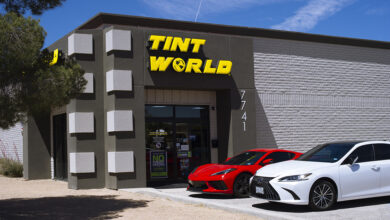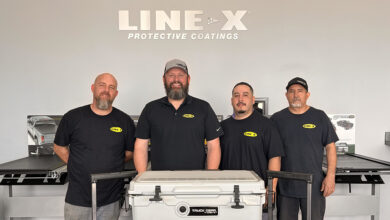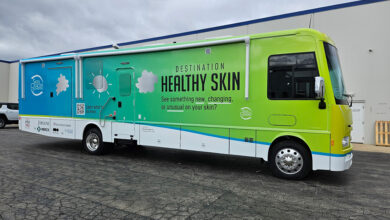Paint Protection Film: Nothing to Hide
The benefits of today’s quality PPF offerings are clear...
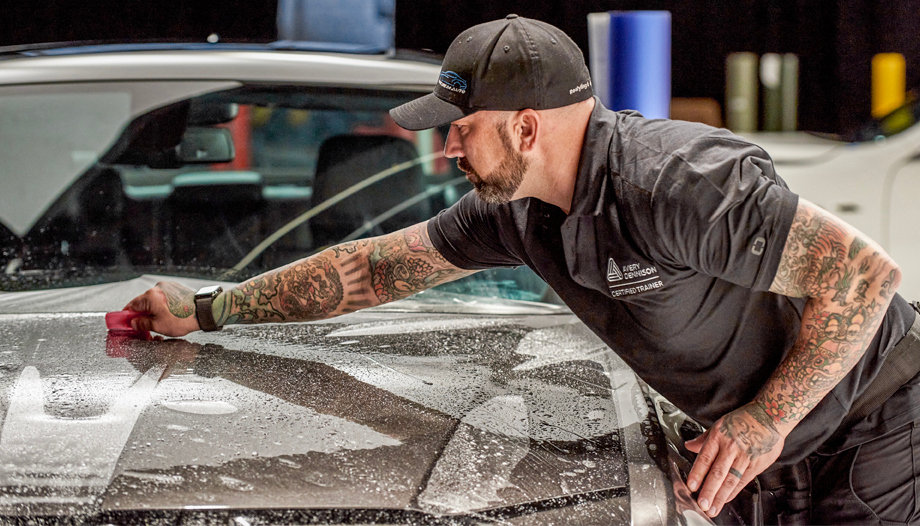
What shop wouldn’t want to offer a practically invisible product that protects its customer’s aftermarket investment? Today’s quality paint protection films deliver an added layer of defense for any performance, classic, off-road or luxury vehicle.
Easy to install and with subtle appearance options that can make a big impact, the benefits of applying PPF are clear. With more and more drivers recognizing and desiring the product, it’s just a matter of choosing the right offering, performing a clean installation and then letting the film do its work.
If you’re interested in adding PPF services to your shop, suppliers have nothing to hide when it comes to top products, sales approaches and common pitfalls to avoid.
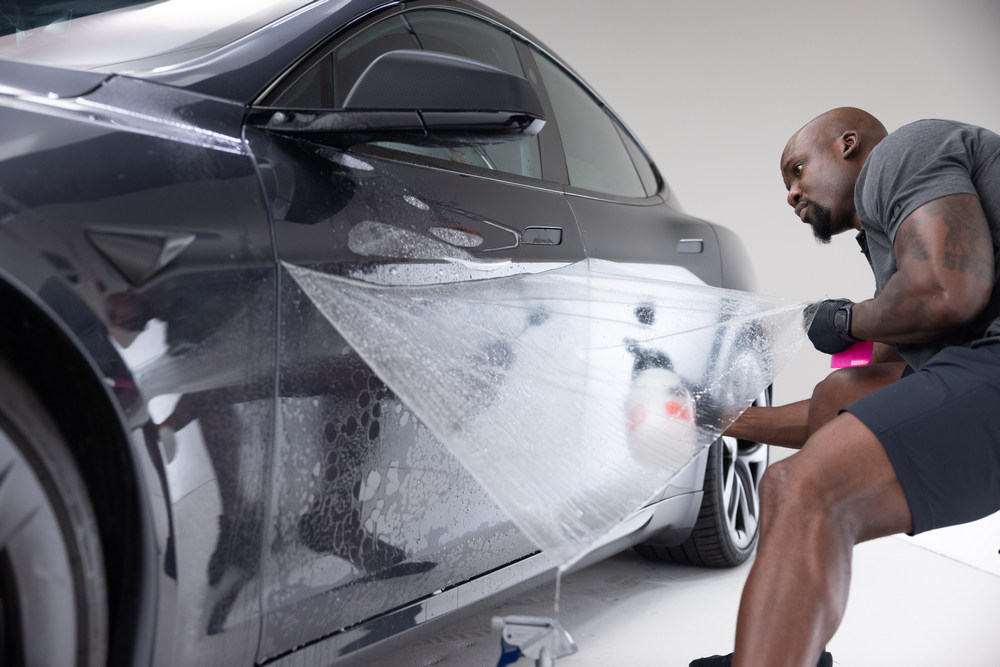
BIGGER IS BETTER
As proof that paint protection films are growing in popularity, a recent trend is to cover even more of the vehicle in PPF.
“We’ve seen a shift from smaller, partial installations on vehicles to more full front clips and full vehicle wraps,” notes Dan Birkenmeier, channel marketing leader, Americas and EMEA, for Eastman Performance Films.
Chris Hardy, senior director of sales for XPEL Inc., agrees that more customers are covering more of their vehicles.
“Five years ago, there were very few clients that would agree to a full body installation. Today, there are shops that average over 25% of their business on full body installs,” he says.
One of the reasons, he notes, is that end consumers are much more familiar with the product and recognize flawless installations are possible.
“The awareness of paint protection film in general has grown exponentially,” says Hardy. “It has become much more common than ever before to do a daily driver versus just exotic and highline cars and SUVs.”
That awareness spurs sales as drivers become more comfortable with adding films, says Alex Sikorski, CEO of Premium Tech Coating Inc.
“Today, PPF professionals have less trouble explaining the benefits of the film to their customers, as they are arriving at the shops knowing what they want, how much it costs and how long the installation takes,” he says.
Armed with that knowledge, Narayan Andrews, owner of Spectrum Auto in Colorado Springs and a trainer for Avery Dennison paint protection film installation classes, says more and more people are ready to protect their vehicle investments.
“The average price of a new car in Colorado today is $50,000. New trucks or SUVs can approach $100,000. That’s why buying PPF is almost a no-brainer for most people.”
Andrews also highlights the technological advancements the industry has enjoyed over the past decade.
“The self-healing, the new adhesives, the layers—compared with 10 or 20 years ago, PPF films are easier to work with today and they don’t yellow after a few years like films did in the past,” he says.
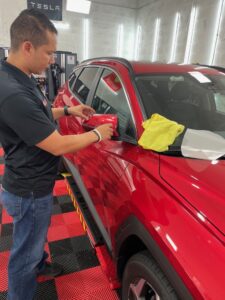
CLEAR UNDERSTANDING
It’s easy to forget that buyers new to PPF may believe that all clear film is the same. It’s up to shops to show them the subtle-yet-important variations.
“When speaking with a customer, take the opportunity to demonstrate the appearance differences and benefits of products like matte or thicker paint protection films, and highlight incremental areas on the vehicle that can benefit from PPF,” says Birkenmeier.
It’s important to show drivers beforehand which areas of the vehicle will be protected and which won’t, Hardy notes.
“Take the time to go through a proper explanation of what the final install will look like,” he says. “Take the customer around their car and show them the areas where the film will not cover the panel or paint 100% so there are no surprises.”
Andrews outlines some common pitfalls for shops to avoid.
“As far as installations go, the biggest mistakes are the butt seams, overcut and overstretching,” he says. “From the marketing side, I think two common mistakes are, one, not talking about the manufacturer’s warranty and, two, not guaranteeing your work.”
If your shop doesn’t currently offer PPF installations, now’s the time to start, Sikorski believes.
“Many shops either wrongfully think it’s an expensive product or it’s difficult to install—neither of which is true,” he notes. “It only takes a two-day training course for you to start on PPF installations.”
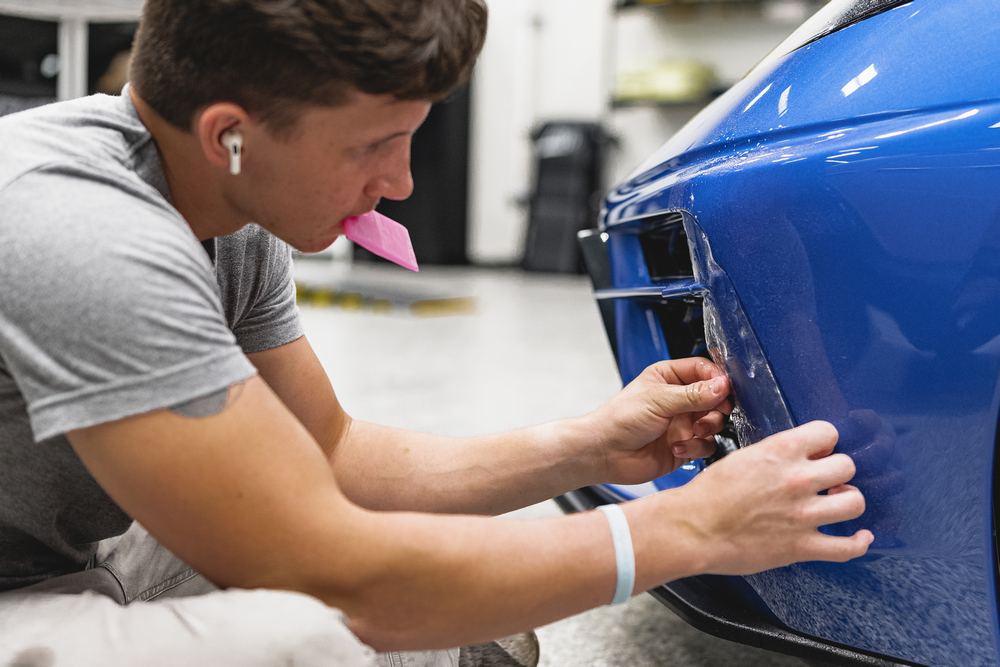
FOOT IN THE DOOR
Looking to increase your shop’s PPF sales? A good place to start is with current clients, says Eastman’s Birkenmeier.
“If you have existing customers who have yet to incorporate paint protection film on their vehicles, consider offering entry-level applications like door edge guards and door cups, perhaps as a value add to another product installation,” he says. “This helps demonstrate the benefits of PPF and introduces them to the product.”
Then, to grab new customers, reach out online, suggests XPEL’s Hardy—even if you must add staff to do it well.
“Hire an in-house, full-time social media content creator,” he suggests. “People are naturally inquisitive and want to understand, to some extent, exactly what it is that you do when you have their machine in your shop. Showing them makes all the difference.”
Knowing the product inside and out will help shops explain the important features of quality PPF installations, says Andrews from Spectrum and Avery Dennison.
“Keep your clients knowledgeable about the benefits of PPF beyond the look of their car,” he recommends. “For example, in Colorado we put sand and a chemical on the roads in winter. So, the front end of your car and your windshield literally get sandblasted. In coastal areas like California and Florida, people don’t think of the salt in the air from the ocean that will corrode. Wherever you are, there are going to be environmental factors that paint protection film will protect against that customers may not be aware of.”
And finally, create packages and programs that serve various customers and vehicles, suggests Sikorski from Premium Tech.
“Do not expect all customers to enter your shop for a full body installation,” he cautions. “By offering different packages—starting from door edges, cups and sills to front edges or full front protection packages—you’ll have a product for each budget, making it easier to choose.”
